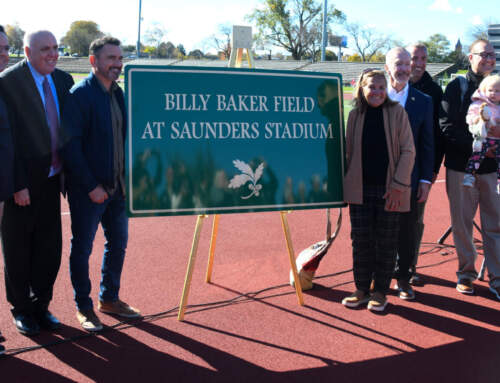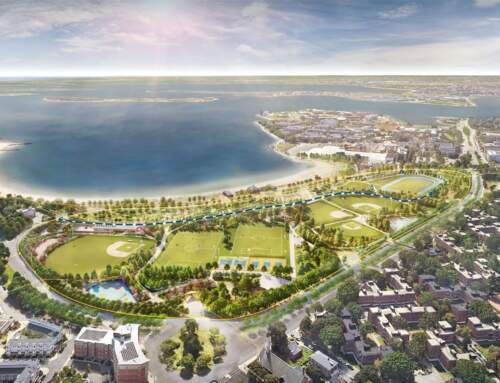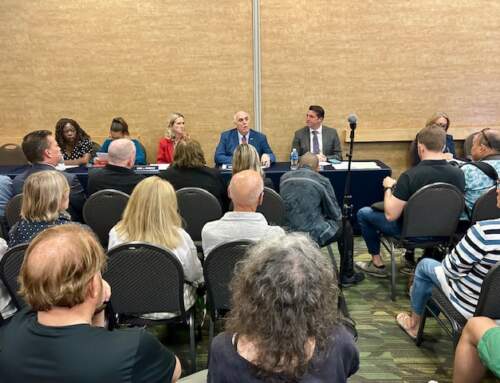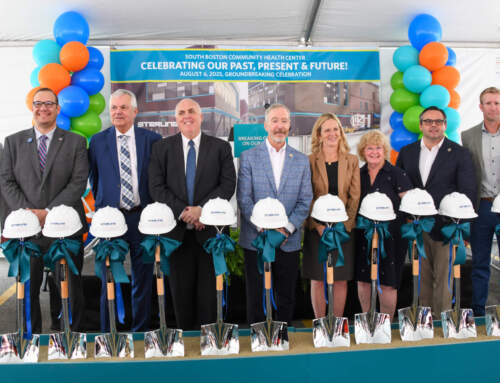by Rick Winterson
Over the past twelve months, the Summer Street Pilot Program has progressed from a concept to the actual six-month execution of the Pilot Program between early December in 2023 until early June this year. Last month, we reported upon this Program, after an update meeting and Open House in the CRISPR meeting room on A Street. The Boston Traffic Department (the BTD) presented its early conclusions, led by Matt Moran, the Director of the BTD’s Transit Team – the group who actually designed and managed the entire Pilot Program from start to finish.
The Transit Team’s second in-person update/Open House took place yesterday evening at the Tynan School. The Open House generated significant interest and many comments from the attendees; it ran over its 5 to 8 p.m. slot by half an hour. That interest, followed by the comments, echoed the Open House statement of purpose – “to provide community members with information on the Summer Street Pilot and collect feedback”.
After beginning his presentation with history of South Boston’s segment of Summer Street, Transit Team Director Moran listed some current problems – the Route 7 bus is often overcrowded and runs into significant delays. Summer Street experiences the worst delays of any road in South Boston and is one of the worst in all of Boston. The Pilot Program goals included “better mobility” especially for buses and bikes, a focus on safety for both bikes and pedestrians, and improved access to terminals (i.e., easier and safer access for trucks and people who work there).
Briefly summarized, the Pilot Program involved assigning painted lanes for particular vehicles. The Program’s findings were “Mixed”. Bike usage increased by a notable 71% but were still very few. Bus times kept steady during the Pilot Program but were still quite long at times, even though they could use the assigned lanes. However, bus transport turns out to be the only possible way to improve Summer Street travel. During the Pilot Program, auto speeds were lower. Only 7% of autos were detected going more than 40 mph – a significant reduction. Both automotive transit times and truck travel times increased somewhat during the Pilot Program, but not by very much. The Pilot Programs also led to specific problems, such as long waits to make left turns and increased hazards because of vehicles approaching from the right in the assigned lanes. In addition, beginning in May added police enforcement became necessary to keep the assigned lanes open.
Many of the negative comments at yesterday’s Pilot Program Open House involved bikes and assigning lanes to them. The key problem is that bicycling is a low-frequency mode of travel. It ranges from perhaps 5% of travel (one out of every 20 trips) to as low as 2% (one out of every 50 trips). And these appear to be the case with nationwide measurements and findings. Buses are also low-frequency travel modes but unlike bikes, they can carry a number of passengers, especially during rush hours.
The review of findings resulting from the Summer Street Pilot Program indicated that much more remains to be done before the Program wraps up. Including yesterday’s meeting at the Tynan, there have been three community meetings so far. The first two were the in-person gathering at CRISPR on June 11 and a virtual meeting in mid-June. Email comments from South Boston residents are urgently solicited at Transit@Boston.gov. They’ll be followed up by coordination with partner agencies, such as the BPDA (Boston Planning & Development Agency) and “stakeholders”. “Stakeholders” are any who use, travel, or work along or near the Summer Street segment in South Boston, which is the mile-and-a-half between Fort Point Channel and First Street, where Summer Street turns into L Street.
Please get in touch about any opinions you might have.







